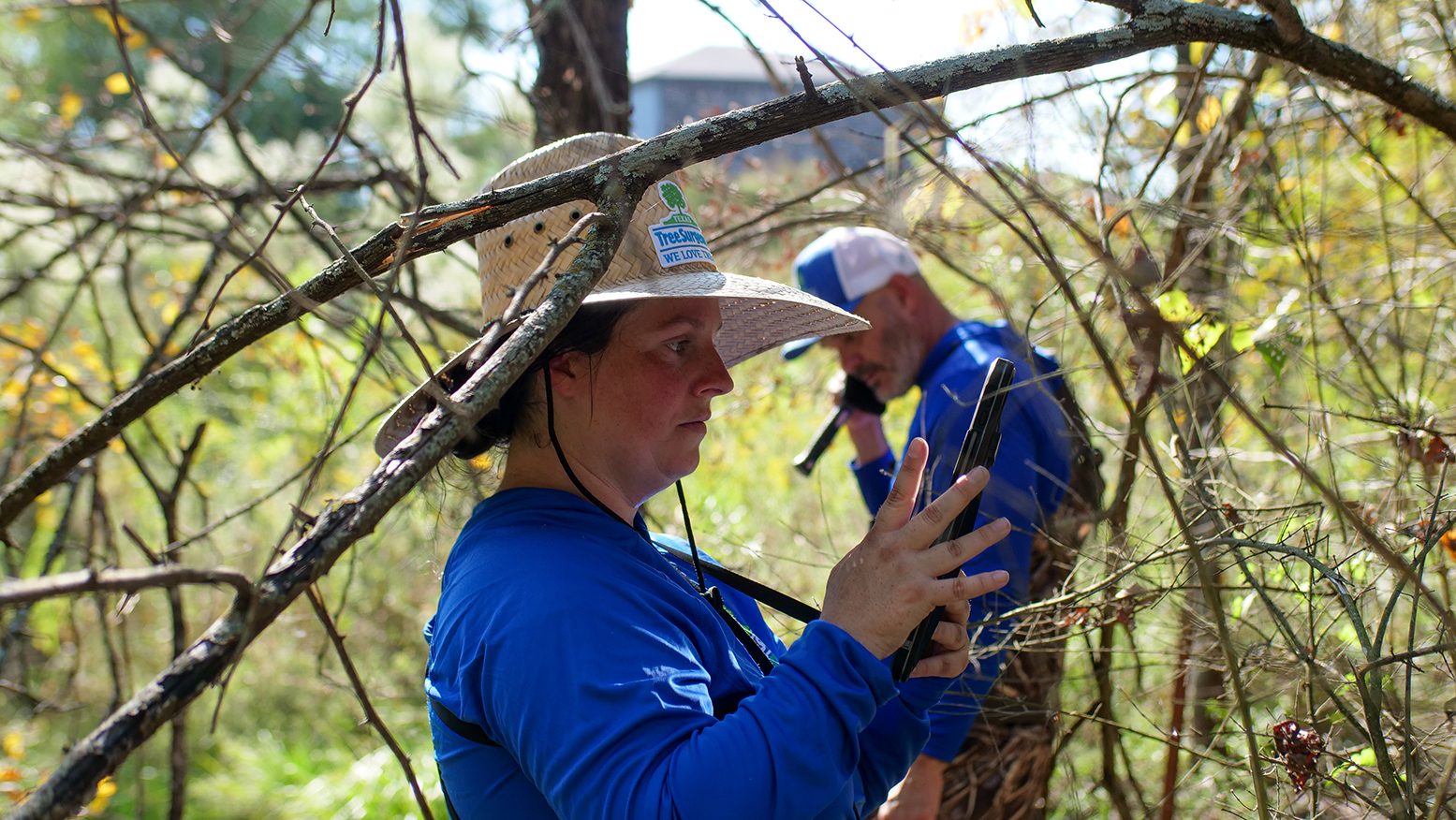Ask Texas Tree Surgeons: What Can I Do About Bagworms?

Another installment in our series of posts where Texas Tree Surgeons answers your tree questions. Are you having problems with your trees and want to know what’s wrong? Let us know!
My cedar tree has bagworms. Can you treat for that?
Bagworms are a common pest in North Texas, especially on cedars, junipers, cypresses, and other evergreens, although they can attack broad-leaf trees (like oaks, maples, and elms) as well. While they are common, they may not always be noticeable, especially on evergreens, as they use material from the trees they infest to camouflage their casings. Like other insects, bagworms have a year-long life cycle, and control measures depend on the growth stage of the pest.
What Are Bagworms?
- Bagworm is the common name for several different species of insect which are actually a type of moth (order Lepidoptera, family Psychidae).
- The bagworm caterpillars are very small (about 1/25 of an inch long), and spin silk thread which they use to attach themselves to plants and to weave into their bags.
- Unlike a typical cocoon, the bagworm’s casing functions as a moveable shelter, with the caterpillars exiting to find food and climb up the plant.
- Once the caterpillar has matured, it undergoes a metamorphosis period before emerging as an adult.
- Male bagworms resemble small moths while the females are flightless.
- Male bagworm moths seek out females during mating season, and the female uses her bag to lay eggs.
- The exact times of caterpillar and adult emergence varies from species to species and is dependent upon the weather.
Can You Treat For Bagworms?
While bagworms are not prevalent every year, once they have infested a tree, they will continue to live there unless controlled.
- The simplest control method is to remove the bags.
- They can be pulled off by hand or sprayed off with high-powered water.
- It it important to dispose of the bags or destroy them, and not just leave them lying on the ground, as the eggs they contain can hatch and re-infest the tree.
- Insecticide sprays can be used to control bagworms, but are most effective when the caterpillars are small, and can be completely ineffective if the bagworms close their bags, as they do to molt or over the winter.
- Systemic insecticides may be used in some cases as a preventative measure. Consult a certified arborist to see if this may be a good option for you.
At Texas Tree Surgeons, we love trees and we love our customers! Bagworms are a widespread nuisance and, while one or two may not harm a mature tree, can cause large-scale defoliation if left unchecked. It is a good idea to remove any bags that you see, whenever you see them. If you have bagworms, and want to see if there might be a chemical treatment option, contact us to set up a visit from a certified arborist. We offer full-service plant health care, including fertilization to help trees stressed by bagworms recover. We look forward to hearing from you!
Related Blogs
Similar blogs related to this topic


Top 10 Things We'd Tell You as an Arborist if We Weren't Afraid of Hurting Your Feelings
This is a list of tree care worst practices that you, or someone you know may be guilty of. Read the following list at your own risk. You’ve been warned, feelings may get hurt. 1.…
Read more

Avoid These Tree Care Mistakes for a Healthy Landscape
Below is a list of overlooked mistakes that could jeopardize the health of your trees. From missteps in pruning to incorrect watering practices, discover how to give your trees the care they deserve. Red oak…
Read more

Why do Arborists Recommend Soil Sampling in Urban Areas like Dallas?
Soil sampling is a crucial practice in urban areas like Dallas. It helps arborists make informed decisions about your landscape to ensure a healthy urban ecosystem. Our native soils vary widely—from the dense clays of…
Read more
